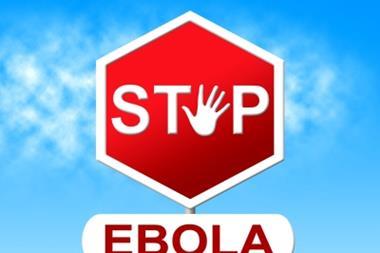Being prepared for the threats to business continuity caused by deadly infectious diseases, such as Ebola, means identifying gaps in the current emergency response plan and taking steps to address these, with clear trigger points for each action

The threat posed by deadly infectious diseases has always existed and always will. However, in an increasingly interconnected world, the ability of diseases to spread rapidly has vastly altered our exposure to the risk – and now, a local tragedy can become a global emergency at the speed of a long-haul flight.
However, like the diseases themselves, the risk can be nebulous and hard to grasp. Businesses need to prepare – without overreacting – and take a cool-headed risk management approach towards tackling their exposure.
“It’s important to realise there are real risks to businesses if they do not address the risk posed by infectious diseases,” explains Dr Greg Jakubowski, regional medical director, Asia, at International SOS.
“First, there is the risk to the people who work for your company; firms have a duty of care to the people who work for them in areas that might be affected by a public health emergency.
“Legal risks also arise: for example, countries are increasingly holding companies responsible for sending citizens into areas at risk of a public health emergency.
“Second, there is a risk to the business itself. If a large number of employees or suppliers are affected, there is a risk to business continuity.
“Third, there is a brand issue. Companies want to be seen as dealing with these issues well, both for their public image and for the benefit of good relationships with their employees. A war for talent is taking place currently and firms want to ensure they take the right steps to retain the right people.”
When considering its plans, any company should first take a step back. When analysing exposure to a potential health threat, they need to first ensure both their health and safety as well travel advice are clearly aligned with company objectives.
“A clear statement should be made to the people on the ground that this threat is being taken seriously,” says Jakubowski.
“It is also vital to identify the key stakeholders who can take on emergency roles and have the skills to carry them out effectively. Existing plans should be reviewed and studied for any gaps.”
Prevention is better than cure
Understandably, many risk managers contacted for this article were unwilling to discuss their specific response plans, except to confirm their existence. However, according to Julia Graham, director of risk management and insurance for global law firm DLA Piper, and the current president of FERMA, these must adhere to clear standards.
“Defensive, reactive measures need to be in place with clear triggers for when these are to be enacted,” she says. “These apply to wide area health events as much as anything else. The major problem is that no one knows where an event will come from and how quickly it will develop. So, the kind of monitoring necessary is wide and diverse.
“To stay up to date, it’s important to receive information from external suppliers who specialise in the relevant intelligence. But firms also need to go looking themselves: they need to look at web resources published by governments in affected areas and global bodies such as the World Health Organisation.”
It is also important not to forget employees who, although they may have low exposure, are still becoming concerned about their safety in the event of an outbreak; they need solid advice and guidance about their risk. The business itself needs attention and firms should look beyond their staff towards suppliers and clients when considering their pandemic exposure.
“It is not necessary for a business to have staff directly in a region to have significant interests there,” says Graham. “For example, in Africa, DLA has 15 affiliate law firms and we need to be able to monitor their travel movements. We need to take a national, continental and international view of their wellbeing.”
As supply chains are also likely to be affected, how can businesses adapt?
“It is also important to be careful what commitments have been made to clients,” says Graham. “I’ve seen supply agreements where clients have asked for specific responses to pandemics and these can be demanding. Firms should check what their obligations are and ensure clients understand them.”
Day-to-day prevention is, of course, an essential precaution, and businesses need to ensure they are giving all staff clear and sensible advice. Some sectors are obviously more vulnerable than others – the enclosed environment of a large cruise ship has a different exposure to a distribution business based on a remote industrial estate.
However, in every workplace, simple procedures go a long way; for example, staff should wash their hands and managers need to check alcohol hand gel and paper towels are available.
“If staff are unwell, they need to know they should inform management and have the confidence to do so,” says Graham. “If staff have a problem overseas, their employer needs to get them to a third-party specialist and make sure they know who that person is and how to find them.”
If the worst happens, namely in the event of pandemic emergency, fear will be a significant issue, so everyone needs to know how to act.
First, a plan should be in place with clear trigger points. “Decide now what moves a plan from one stage to the next,” advises Jakubowski.
“It is vital to ensure the people, the business and the reputational aspects are all being covered,” he adds.
Second, the plan needs to be tested by drill or desktop exercise long before any real emergency occurs.
Third, an honest and open appraisal of the process should take place afterwards.
“What underpins all these stages is communication,” says Jakubowski. “Everyone needs to understand what the objectives are and what stage they are at any particular time.”
Diseases to watch out for
Currently, several infectious diseases have the potential to create serious public health emergencies on a large scale:
Middle-East respiratory syndrome coronavirus (MERS-CoV). A potentially very serious condition, with a death rate of about 30%.
Avian flu. So far, this is still limited to animal-to-human transmission, but it has the potential to mutate to a human-to-human transmission and thus become a serious public health emergency.
Severe acute respiratory syndrome (SARS). A serious, potentially life-threatening form of pneumonia.
Ebola virus. Ebola is hard to catch, but it has an extremely high fatality rate: about 80%–90%.
Other diseases can cause significant disruption locally. For example, a single case of tuberculosis can shut down an operation, as can an outbreak of measles or infectious diarrhoea.
Ebola: a case study in preparedness
According to David Hutcheson of the Business Continuity Institute, the current Ebola outbreak poses a low risk as the virus is much harder to catch than more flu-like illnesses.
He believes businesses with links to the area of infection are making the necessary plans and consulting with experts to ensure their staff and visitors receive the
necessary advice.
“For those in the UK and with staff in areas outside South-West Africa, the risk is low, but businesses should maintain a watching brief to ensure they know the risk, the actions to take and whether there may be an increase in the threat level,” he says.
“Those based in – or with offices in – the affected area, should be issuing clear communications to their staff on how to prevent the spread of the virus and to ensure they have access to advice whenever needed.
“Actions such as placing posters in key areas and issuing communications to staff are good practice and, from the evidence seen so far, these are being carried out.”




















No comments yet